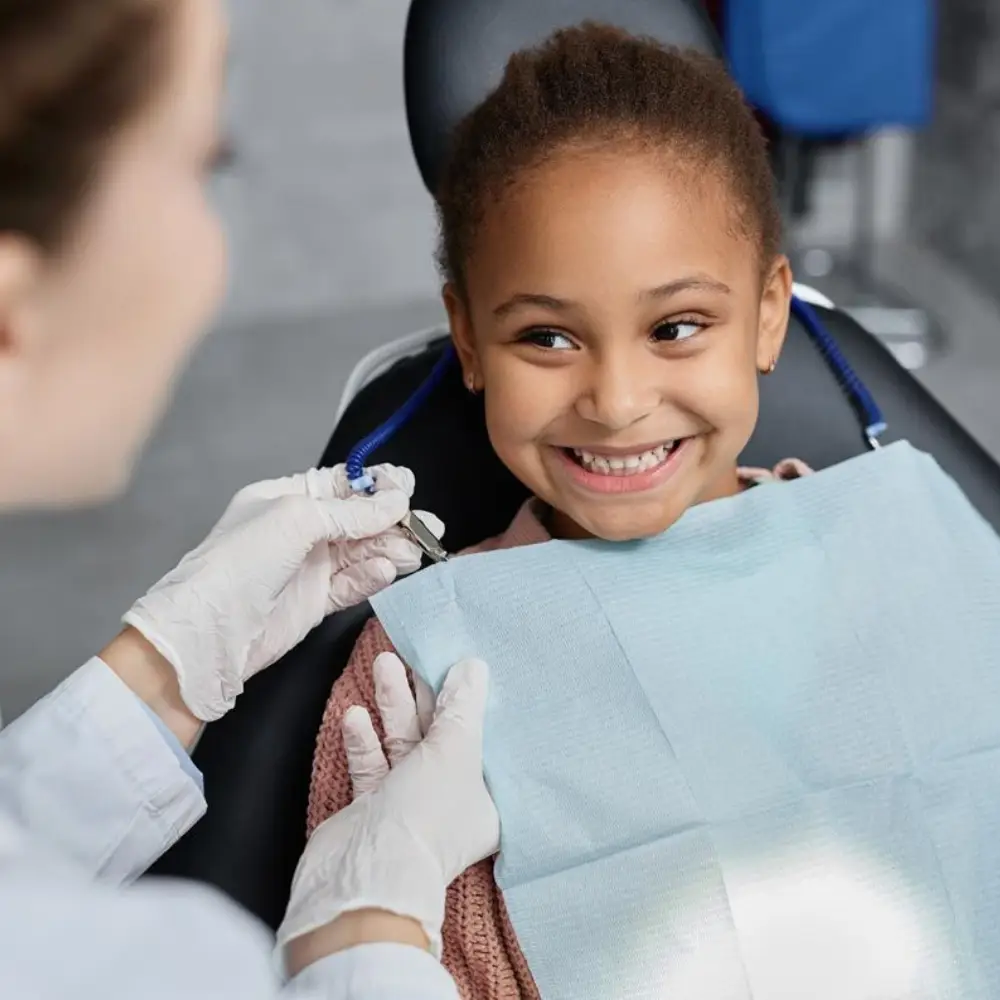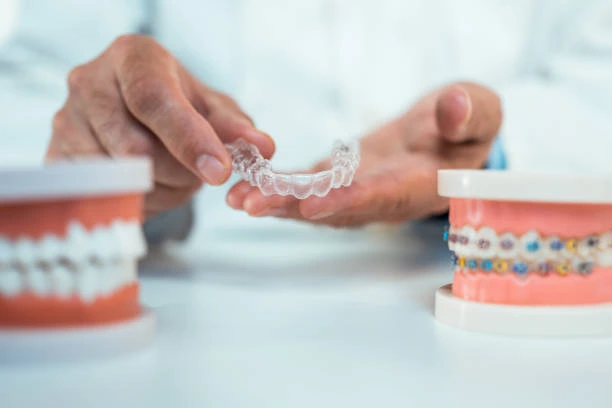Having already been through the procedure of wearing braces, the thought of requiring additional orthodontic work may be frustrating, however, Invisalign after braces can be an investment that is worth it to many. Have your teeth moved over time or you fail to wear your retainer as you are told to do it, then Invisalign is a discreet and comfortable method to restore your smile. Does it really need to be done–and is it worth the time and money? This post will examine when it makes sense to use Invisalign after braces, what to expect and whether it is the right move towards your smile.
Why Invisalign May Still Be Needed After Traditional Braces
Invisalign is common among the people who had braces earlier but are experiencing their teeth moving to the wrong position. This regularly occurs when retainers are not regularly used following the removal of the braces. Whereas the traditional braces are very effective when it comes to correcting complex alignment and bite problems, the effects are not always long lasting unless one considers proper long-term maintenance. Teeth are likely to gradually shift with the passage of time due to natural aging, jaw development, or the habits of an individual. Invisalign is a comfortable option and the best possible alternative to straighten the teeth and bring the smile back without the need to go back to the metal brackets and wires.
Shifting Teeth After Braces—Why It Happens
It is very normal that teeth move even after braces and even more so when retainers are not worn as advised. This progressive relapse called orthodontic relapse occurs due to the natural inclination of teeth to go to their original positions. It may take months or years to relapse, and the relapse may be preceded by no evident symptoms. Any small changes can affect your bite, cause crowding or change the appearance of your smile. That is why post-braces care such as wearing retainers and checking the changes are very important to the long-term outcome.
Retainer Noncompliance and Its Long-Term Impact
It is normal to get individuals who forget to wear their retainers as time goes by due to discomfort, inconvenience and in some cases, forgetting to put them on especially years after orthodontic treatment. Regrettably, this might result in slow teeth movement and gradual loss of the straightening effect that the braces have on the teeth. When the changes are more noticeable or are starting to impact the comfort and bite functionality, Invisalign becomes a tool that many resort to. Invisalign is particularly attractive in such instances as it can remedy moderate and mild relapse in an inconspicuous and comfortable manner without having to resort to metal braces again.
Cosmetic Refinement vs. Structural Correction
Other patients resort to Invisalign not to correct any major bite, but to enhance the overall appearance of their smile. Even in the case where the bite is still functional, minor problems such as rotations of the teeth, slight crowding, or spacing may take a toll on the confidence. These minor flaws tend to worsen with time and in particular in photos or when speaking. Invisalign is an aesthetic and efficient way to perfect these small post-braces changes. It enables a patient to improve his or her smile without attracting attention to the treatment because of clear aligners that are almost unnoticeable.
Benefits of Switching to Invisalign Post-Braces
Invisalign has emerged as the new standard among adults and teenagers who desire to perfect their smile without the noticeable effect, pain, or inconvenience of wearing metal braces. It has clear and removable aligners and is a modern and discreet option to correct mild to moderate alignment problems. Invisalign offers an almost unnoticeable and flexible treatment whether you have had a minor relapse after braces or you just want to fix minor flaws.
The fact that it allows one to eat, brush, and floss as usual also makes it more attractive to use, particularly among busy people or individuals who are especially concerned about their looks. Consequently, an increasing number of individuals are resorting to Invisalign in order to obtain a confident and refined smile with the least interference with their lives.
Discreet Treatment for Minor Relapse
The nearly invisible clear aligners that are utilized in Invisalign are almost impossible to see, so they are a great option to use by working professionals, college students, or older teens who are looking to keep their orthodontic treatment as discreet as possible. This less conspicuous design will enable them to enhance their smile without feeling self-conscious as is the case with metal braces. Since the majority of post-braces corrections are in the form of small adjustments or spacing, Invisalign can normally correct these without as many aligner trays and a shorter overall treatment period. That is, you can achieve visible results in a matter of months as you do not change your appearance or routine.
Comfort and Flexibility with Clear Aligners
In contrast to standard braces with brackets and wires, Invisalign trays are constructed out of smooth, medical grade plastic and are completely removable. The design has a number of daily benefits-patients will be able to brush and floss as usual, and the chances of plaque and gum problems will decrease. It is also easier to enjoy meals since one is not restricted by a diet, just take out the aligners and put them back in.
The lack of metal also ensures that there is very minimal to no irritation to the inside of the cheeks, lips, or gums making the aligners much more comfortable. When patients are leaving braces, Invisalign tends to seem like an upgrade: less cleaning, fewer trips to the dentist and an easier fit into their lifestyle.
Faster Realignment in Many Cases
Since the adjustments that will be required following the application of braces are not extensive, the length of Invisalign treatment is normally shorter, with 3 to 9 months being a common period. This faster schedule is particularly attractive to those who desire observable changes without having to spend years of treatment once more. The results of treatment become visible in the first several weeks, and this fact contributes to the increase in motivation and confidence during the process.
Less number of aligners also translates to fewer visits to the office hence it is easy to use by individuals who have tight schedules. You may be getting ready for an important occasion or just want to feel more comfortable about your smile, Invisalign can provide a quick, efficient way to improve.
Invisalign Candidacy for Post-Braces Patients
Invisalign does not suit all people after braces, but suits most people with mild to moderate shifting or spacing problems. Your dentist or orthodontist will thoroughly assess your present state of dental alignment, the position of your jaws, the state of your bones, and your overall oral health to see whether Invisalign is the right choice. They can scan or X-ray to determine the extent of movement required and how responsive your teeth would be to the treatment using aligners.
Such factors as gum health, state of any dental work you have, and your capability to wear the aligners regularly will also be taken into account. Traditional orthodontics might still be preferable in certain instances but the majority of post-braces touch-ups are easily and comfortably handled using Invisalign.
How Dentists Evaluate Your Alignment Needs
An in-depth dental analysis- digital scan, photos, and X-rays will allow your provider to have a clear view of the extent to which your teeth have moved since the removal of the braces. This assessment assists in evaluating the severity of the relapse and the right solution to use whether Invisalign is the right solution. It all depends on your bite and your alignment, and your dentist or orthodontist will determine whether the aligners will be able to move your teeth safely and effectively.
In most instances, Invisalign is an ideal solution to mild or moderate relapse as it is an easy and subtle method of restoring your perfect smile. In more extreme changes, other or additional treatments can be prescribed.
When Invisalign Is the Better Option Over Braces Again
In instances where the relapse is minimal and mostly aesthetic e.g. mild crowding, minimal gaps, and minor rotations, Invisalign offers a less invasive, less noticeable, and very attractive way to realign. It has transparent trays that can perfectly tweak your smile within the comfort and visibility of metal braces. Nevertheless, in case of the serious movement of teeth, problems with the bite, or the reappearance of the structural problems, such as overbite or crossbite, your dentist might suggest a more detailed treatment plan.
This may include a second session of old-fashioned braces or a mixed treatment regimen that starts with braces and ends with Invisalign. The best option will be dependent on the complexity of your case, your desires and the dedication to treatment.
Important Considerations: Age, Bone Health, Budget
Aging causes natural loss of bone density which may affect the sensitivity of your teeth to motion. What this implies is that orthodontic treatment, which also includes Invisalign, can be slightly longer in older adulthood than in teens or young patients. The age, health of bones, and overall oral health will also be taken into consideration to determine whether Invisalign is the best and most efficient option. Another significant factor is the budget since the price of Invisalign may change depending on the complexity of your case and the number of aligners you will need.
Nevertheless, in many scenarios particularly in small corrections, Invisalign is usually cheaper than an entire cycle of the conventional braces. Your provider will be able to provide you with an individual estimate and talk about payment or financing in case it is necessary.
What to Expect During Invisalign Treatment After Braces
You may be wondering what the treatment process will be like the second time around should you be considering Invisalign after having braces. Although, in general, the method is not much different than the regular Invisalign, post-braces treatment tends to be more targeted and effective, in particular, in case the relapse is not severe. Being prepared can make you feel more confident and ready when you start your journey to a straighter smile again. The first scans, your first tray, and subsequent visits, here is what you can expect when it comes to Invisalign treatment after braces.
Adjusting to Aligners After Fixed Brackets
You might require a couple of days to adjust to wearing aligners, particularly in the event that you have not worn anything in your mouth since you had braces. There may be a little pressure or tightness as your teeth start to move, which is the indication that the aligners are doing their job.
Majority of the patients report a short adjustment period and the initial discomfort will typically disappear after several days. You will have to wear your trays 20-22 hours a day only taking them out to eat, drink anything but water, brush and floss. It is important to remain consistent in terms of wear time to attain prompt and successful outcomes. You should also maintain your aligners clean and adhere to the instruction given to you by your provider to give you an easy time during the treatment.
Duration and Follow-Up Care
Depending on the severity of the relapse periods of treatment may vary but in the majority of post-braces situations, Invisalign usually takes around 3 to 9 months. Each 1 to 2 weeks you will change to a new set of aligner trays as your teeth slowly shift into the correct position. During the process of your treatment you will be visiting your dentist or orthodontist on a regular basis, typically every 4 to 6 weeks, to discuss progress and make adjustments if needed.
After the completion of your Invisalign treatment, you will need to wear retainers to ensure you keep your new alignment and avoid shifting going forward. In this case, it is important to be consistent in retention to safeguard your investment and the long-term outcomes.
Tips for Retaining Your Final Results
After the end of your Invisalign treatment, you should avoid the same mistake that caused relapse. To keep your results, a high-quality, custom retainer that is as prescribed by your dentist or orthodontist should be worn. To many patients, nighttime-only wear suffices to maintain teeth in their alignment and is convenient to add to a long-term practice. Missing retainers (even periodically) may mean shifting with time. Your alignment will also be monitored by regular dental checkups that will help detect early signs of movement. The way to maintain your smile in years is to remain consistent with retention.
Frequently Asked Questions (FAQs)
1. Can I get Invisalign if I already had braces years ago?
Yes, many patients who have had braces in the past are great candidates for Invisalign, especially when dealing with mild to moderate relapse. Invisalign is designed to correct minor shifts, spacing, or crowding that may have occurred over time. Your dentist will evaluate your current alignment and determine if clear aligners can effectively address your concerns. In many cases, Invisalign provides a simpler, less invasive alternative to going through braces again. Adults often prefer the clear, discreet look of Invisalign, along with the flexibility to remove the trays when needed. It’s a comfortable and convenient option for refining your smile without disrupting your lifestyle.
2. Will Invisalign be faster if I’ve had orthodontic treatment before?
In most cases, yes—Invisalign treatment tends to be faster after braces. Since your teeth were already aligned in the past, any relapse is usually minor and easier to correct. As a result, treatment often lasts just a few months to under a year. Your dentist or orthodontist will develop a custom plan based on your current alignment and specific needs. Having had braces before often means a quicker, more straightforward path to your ideal smile. With consistent aligner wear, you can expect noticeable improvements in a relatively short time.
3. How much does Invisalign cost after braces?
Costs for Invisalign after braces typically range from $2,000 to $5,000, depending on the number of aligner trays needed and the complexity of your case. Since most post-braces treatments involve minor corrections, the cost is often lower than a full Invisalign treatment. Many dental offices offer flexible payment plans or financing options to make the process more affordable. It’s a good idea to ask your provider for a personalized estimate based on your specific needs. Additionally, some dental insurance plans may cover part of the cost, so checking your benefits can be helpful. Overall, Invisalign can be a valuable investment in restoring and maintaining your smile.
4. Is it normal for teeth to shift after braces?
Yes, it’s actually quite common for teeth to shift after braces. Over time, without consistent retainer use, your teeth may naturally try to return to their original positions—a process known as relapse. Even slight movements can impact your bite or the overall look of your smile. That’s why long-term retainer use is essential to maintain results. If you notice your teeth have shifted, Invisalign is often a great solution to gently guide them back into alignment without the need for traditional braces again.
5. Will insurance cover Invisalign after braces?
Insurance coverage for Invisalign after braces depends on your specific policy. Some dental insurance plans include partial coverage for orthodontic retreatment, particularly if it’s considered medically necessary. To get a clear picture, it’s best to contact your insurance provider directly. Your dental office can also assist by reviewing your benefits and helping you maximize coverage. Additionally, flexible spending accounts (FSAs) or health savings accounts (HSAs) can often be used to offset out-of-pocket costs.
Final Thoughts & Next Steps
If you’ve noticed your smile changing years after braces, you’re not alone. Invisalign offers a flexible and subtle way to regain alignment without the brackets and wires. Whether your concern is cosmetic or functional, a consultation with your dentist can reveal whether Invisalign is right for your current needs.
Take the first step by booking a consultation with your dentist. Discuss your past orthodontic history, your concerns, and your smile goals. With the right evaluation, you could be just months away from having the smile you worked hard to achieve the first time, only better preserved this time.
Don’t wait for the shifts to get worse. Explore your options now and commit to a long-term plan that keeps your smile healthy and aligned for years to come.


